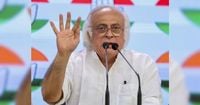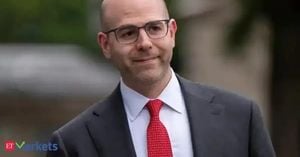In a swirl of competing narratives, the aftermath of the May 2025 India-Pakistan conflict is once again making headlines, with former US President Donald Trump boldly asserting that his trade diplomacy was the decisive factor in halting hostilities. Trump’s repeated claims, delivered most recently at the American Cornerstone Institute Founder’s Dinner on September 20, have reignited debate both in Washington and New Delhi—especially as India’s government continues to flatly deny any foreign intervention in the peace process.
At the heart of the controversy is Operation Sindoor, launched by India on May 7, 2025, targeting terror infrastructure in Pakistan and Pakistan-occupied Kashmir. The operation was a direct response to the deadly Pahalgam attack on April 22, which killed 26 civilians and shocked the nation. Over the next four days, both countries exchanged intense cross-border drone and missile strikes, pushing the subcontinent to the brink of a wider conflict.
But by May 10, India and Pakistan reached an understanding to end the fighting. According to multiple Indian officials and statements in Parliament, this ceasefire was the result of direct talks between the Directors General of Military Operations (DGMOs) from both militaries. Prime Minister Narendra Modi, addressing Parliament, was unequivocal: “No foreign leader asked India to halt Operation Sindoor.” External Affairs Minister S Jaishankar echoed this, insisting there was “no third-party intervention.”
Yet, on the other side of the globe, Donald Trump has been telling a very different story. At the Founder’s Dinner, Trump declared, “Think of India and Pakistan. Think of that. And you know how I stopped that – with trade. They want to trade. And I have great respect for both leaders. But when you take a look at all of these wars that we’ve stopped.” According to PTI and Business Standard, Trump went on to list not just India and Pakistan but also Thailand and Cambodia, Armenia and Azerbaijan, Kosovo and Serbia, Israel and Iran, Egypt and Ethiopia, and Rwanda and the Congo as conflicts he claims to have helped resolve. “Just look at that… We stopped all of them. And 60 per cent of them were stopped because of trade,” he said.
Trump’s assertion that “like with India, I said, ‘look, we’re not going to do any trade if you’re going to fight and they have nuclear weapons. They stopped,’” adds a dramatic flair to his version of events. He has further suggested that his efforts to end these conflicts, including the India-Pakistan standoff, should earn him the Nobel Peace Prize. “So they said, ‘but if you stop Russia and Ukraine, sir, you should be able to get the Nobel’. I said I stopped seven wars. That’s one war, and that’s a big one,” Trump told the audience, as reported by PTI.
Such statements have not gone unnoticed in India. On September 21, as Prime Minister Modi prepared to address the nation, the opposition Congress party seized the moment to question whether Modi would publicly address Trump’s repeated claims. Congress general secretary Jairam Ramesh posted pointedly on X (formerly Twitter): “As the PM prepares to address the nation, his good friend in Washington DC has once again stolen his thunder and claimed – for the 42nd time – that he stopped Operation Sindoor by using increased trade with America as leverage.” Ramesh went further, asking whether Modi would address the “increasingly fraught Indo-US relationship” and the concerns of Indian H-1B visa holders, or simply repeat known information about new GST rates.
The Congress party’s barbs come amid broader anxieties about the Trump administration’s trade and immigration policies. In a move that sent ripples through India’s skilled professional community, Trump’s administration ordered a steep hike in the annual H-1B non-immigrant visa fee to USD 100,000—a one-time payment for new petitions, but not applicable to current visa holders. Critics in India warn that such measures, along with US tariffs, could harm Indian workers and farmers, exacerbating tensions between the two countries.
Meanwhile, Trump’s narrative of trade-driven peacemaking has found little traction with Indian officials. Since May, the Indian government has consistently stated that the ceasefire with Pakistan was achieved through direct military-to-military dialogue, not outside mediation. As Devdiscourse News Desk noted, “India has denied any foreign intervention, maintaining that the cessation of hostilities was a result of direct military discussions, particularly the Operation Sindoor initiative.”
Despite these denials, Trump has continued to trumpet his role in global peacemaking, suggesting that his negotiation style could resolve even the thorniest conflicts. At the Founder’s Dinner, he emphasized, “We are forging peace agreements, and we are stopping wars. So we stopped wars between India and Pakistan, Thailand and Cambodia.” He has repeated these claims not only in the US, but in speeches abroad, including in Saudi Arabia, Qatar, and the UK, according to Congress leader Ramesh.
The divergence between Washington’s and New Delhi’s accounts is stark. For India, the narrative is one of sovereign decision-making and military professionalism. For Trump, it’s a story of bold American intervention, wielding trade as a carrot and stick to coax adversaries toward peace. The reality, as so often in international affairs, may be more nuanced—but the political stakes for both sides are clear.
For Modi’s government, any hint of foreign involvement in a sensitive national security matter is politically fraught, especially with elections never far away. For Trump, the image of a dealmaker who can end wars and win prizes is central to his personal brand and political legacy. The Nobel Peace Prize, invoked repeatedly in his remarks, is a tantalizing symbol of international validation—one that Trump clearly believes he deserves for his efforts.
As for the ceasefire itself, what is undisputed is that Operation Sindoor was a swift and forceful response to a deadly terror attack, and that after several days of dangerous escalation, both India and Pakistan agreed to stand down. Whether that peace was brokered in the back channels of trade diplomacy or hammered out in tense military negotiations across a hotline, the world may never know the full story. What is clear, however, is that both sides are eager to claim credit—and to shape the narrative for their own audiences.
In the end, the India-Pakistan ceasefire of May 2025 stands as a testament to the high stakes and tangled narratives of modern diplomacy. As leaders in both capitals continue to spar over who deserves the laurels, the people of the region—and the world—watch closely, hoping that peace, however it was achieved, will hold.




